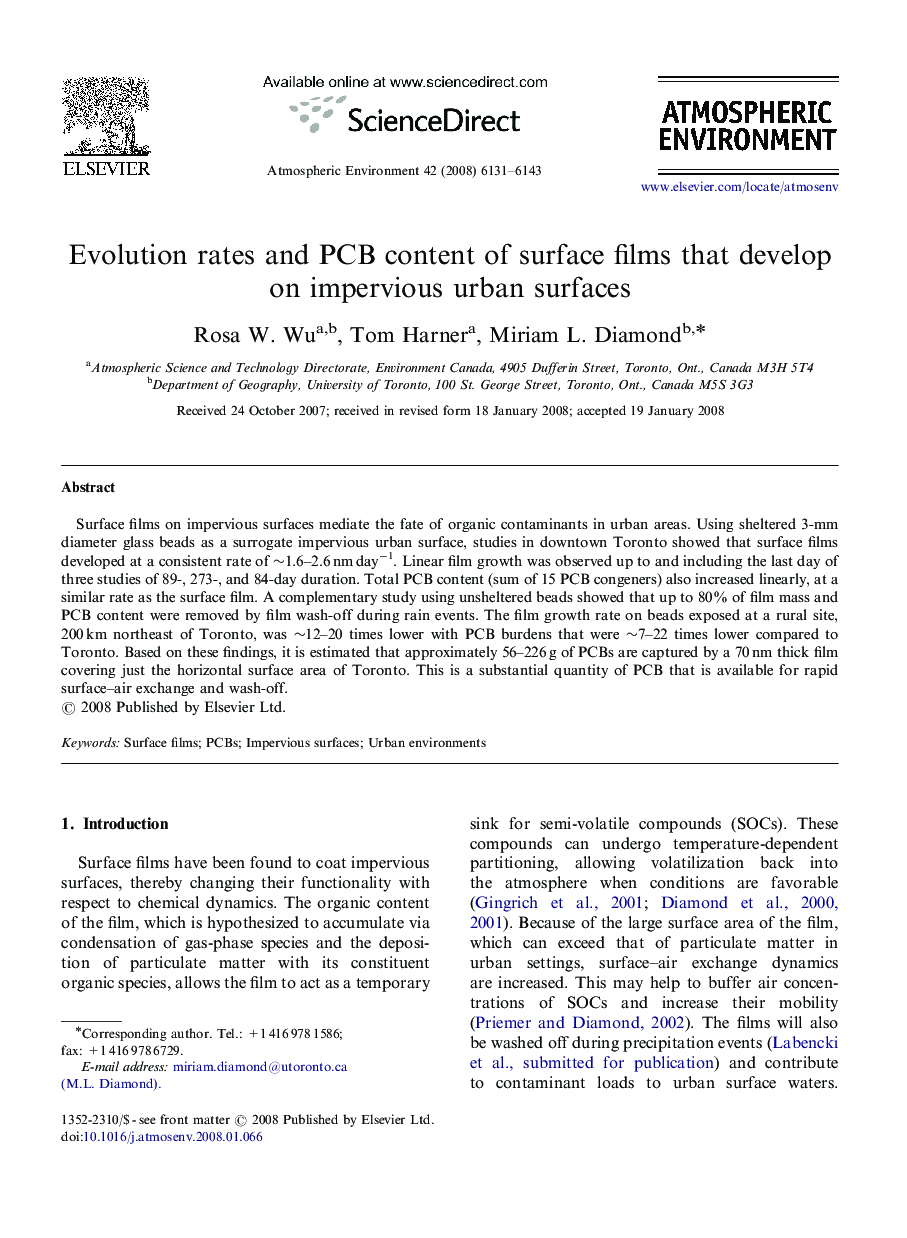| Article ID | Journal | Published Year | Pages | File Type |
|---|---|---|---|---|
| 4442772 | Atmospheric Environment | 2008 | 13 Pages |
Surface films on impervious surfaces mediate the fate of organic contaminants in urban areas. Using sheltered 3-mm diameter glass beads as a surrogate impervious urban surface, studies in downtown Toronto showed that surface films developed at a consistent rate of ∼1.6–2.6 nm day−1. Linear film growth was observed up to and including the last day of three studies of 89-, 273-, and 84-day duration. Total PCB content (sum of 15 PCB congeners) also increased linearly, at a similar rate as the surface film. A complementary study using unsheltered beads showed that up to 80% of film mass and PCB content were removed by film wash-off during rain events. The film growth rate on beads exposed at a rural site, 200 km northeast of Toronto, was ∼12–20 times lower with PCB burdens that were ∼7–22 times lower compared to Toronto. Based on these findings, it is estimated that approximately 56–226 g of PCBs are captured by a 70 nm thick film covering just the horizontal surface area of Toronto. This is a substantial quantity of PCB that is available for rapid surface–air exchange and wash-off.
